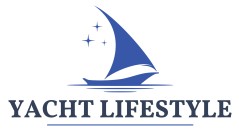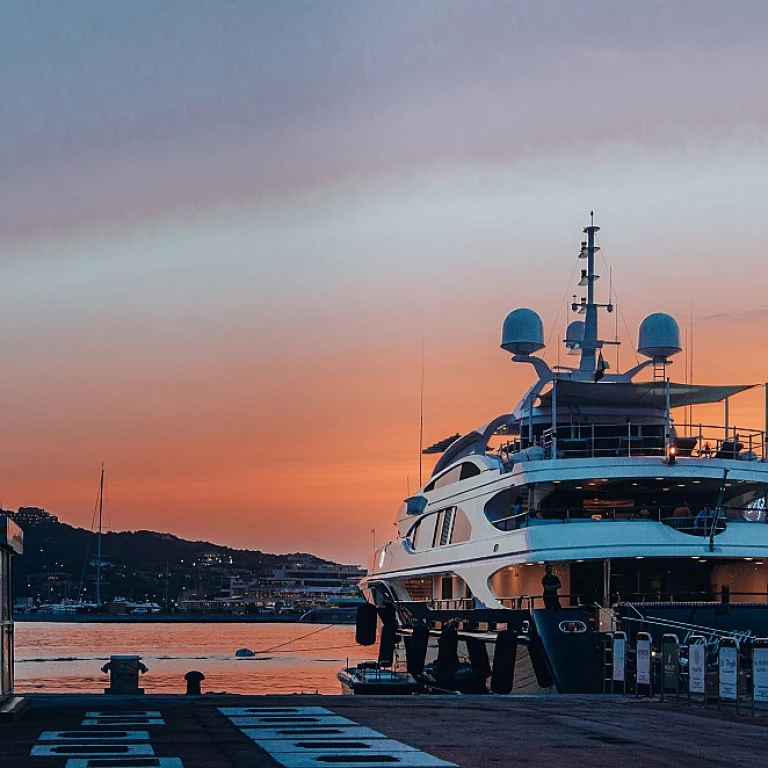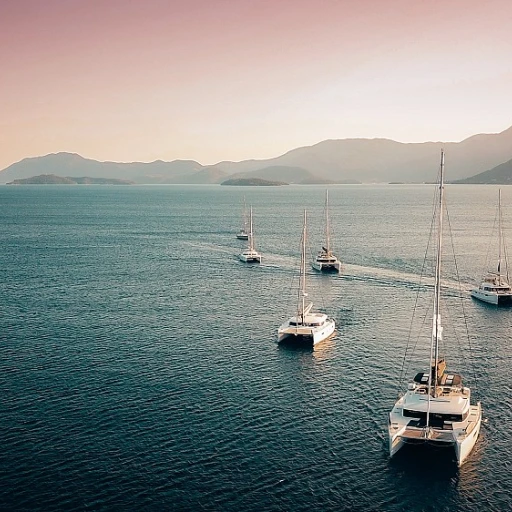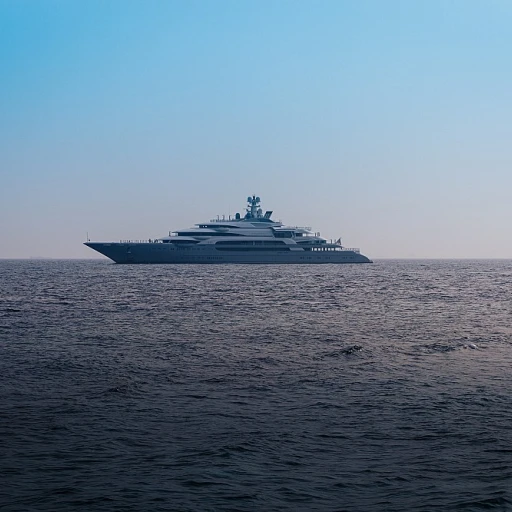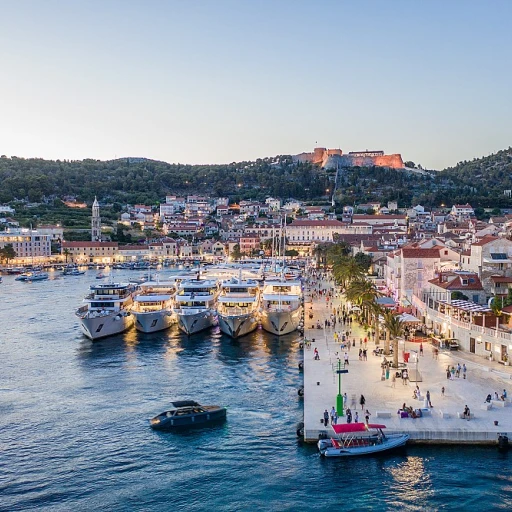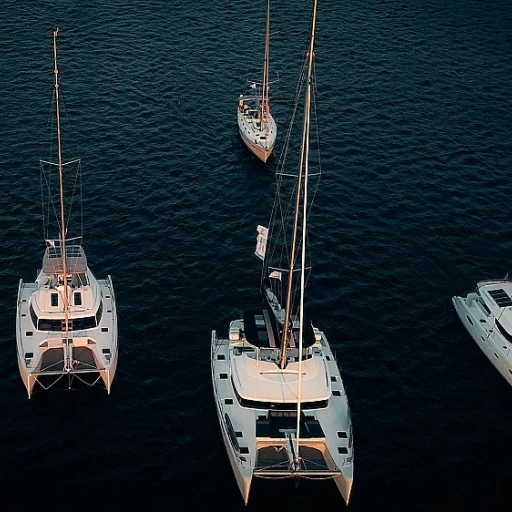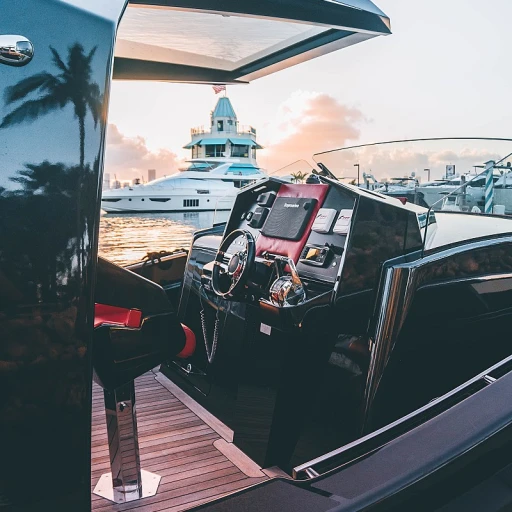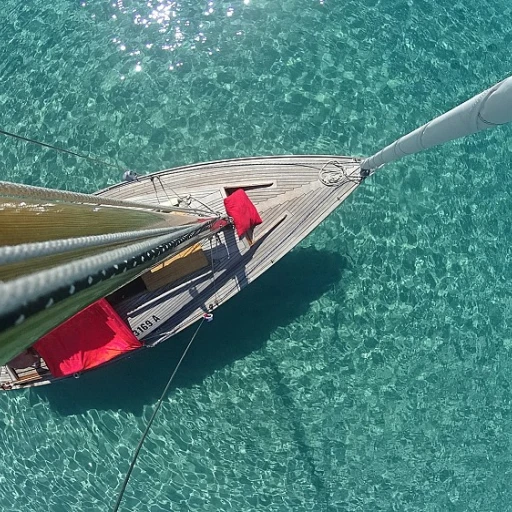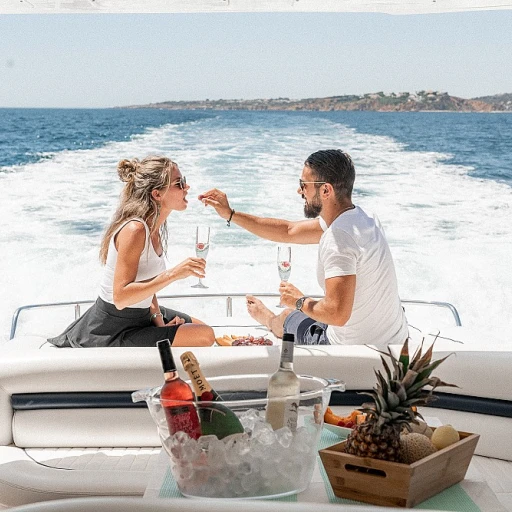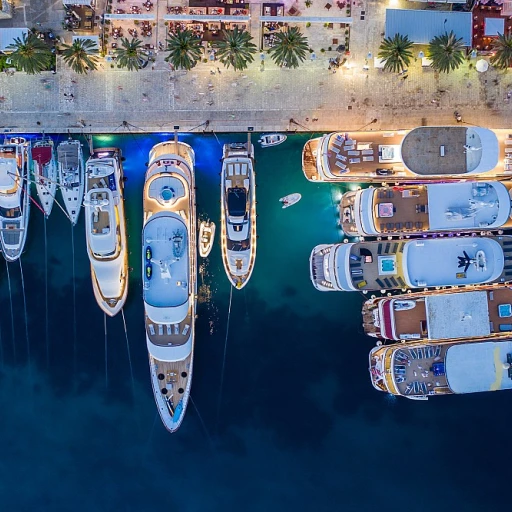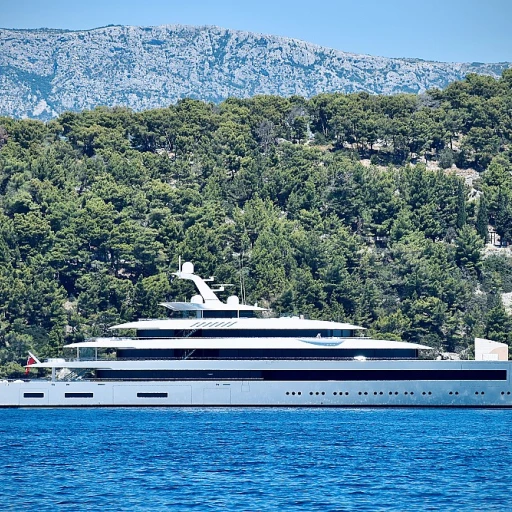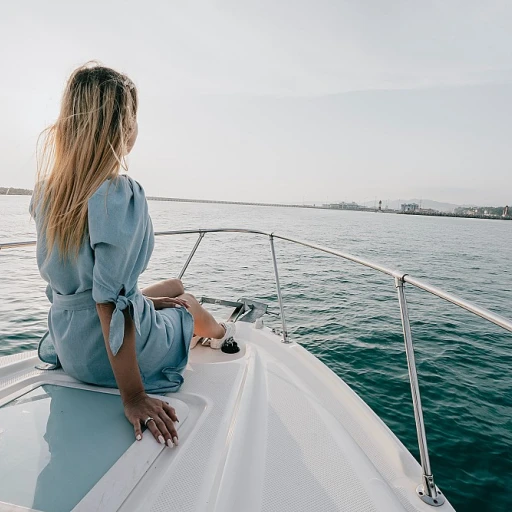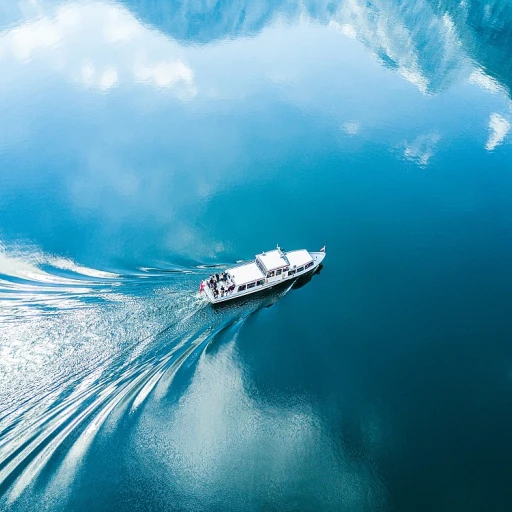-large-teaser.webp)
The Origins of the Bruce Anchor
Tracing back the Bruce Anchor's inception
The story of the Bruce anchor is as fascinating as the innovation it brings to modern yachting. Its origins lie in the perseverance of finding an efficient anchoring solution that could withstand various marine conditions. Originally developed in the late 20th century, the Bruce anchor quickly became a staple in the yachting industry, thanks to its unique design and reliable holding power. Unlike traditional anchors, its shape and material play a crucial role in its performance. The Bruce, often referred to as the 'claw anchor' due to its distinctive style, boasts a shape that allows it to dig into the seabed with greater efficiency. This was an intentional design choice that differentiated it from many of its predecessors which struggled under specific conditions. Lbs for lbs, the Bruce's innovative design offers superior holding power, making it a preferred choice for steel, as well as fiberglass boats alike. From the small marine business to larger yacht manufacturers, the Bruce anchor has become synonymous with safety and reliability. Its development marked a significant shift for both small boats and larger vessels, offering a robust solution that aligns with the demands of modern yachting. For those looking to enhance their yacht experience, integrating effective anchoring systems like the Bruce can contribute to safer, more enjoyable boating. This trend underscores why selecting the right anchor is as important as choosing the best hull or motor. To delve deeper into aligning your maritime adventures with transformative innovations, enhancing your yacht experience with pet-friendly solutions might be the next insightful read.Design Features and Benefits
Distinct Features and Advantages to Anchor Your Decision
The bruce anchor, a hallmark in the world of maritime anchors, has carved its niche due to its innovative design and practical benefits. At the heart of its allure is the unique claw shape, which is often referred to as the "claw anchor." This shape allows it to set quickly and remain steadfast, making it a preferred choice for various boat types, especially for those who sail on varying seabeds. The design characteristically showcases a broad shank and large surface area, granting it superior holding power that enhances a yacht owner's trust in the anchor's capability. This quality is particularly notable when considering the boat length and weight (expressed in lbs) that it can firmly secure. The defining "claw style" doesn’t merely offer aesthetic appeal but plays a crucial role in functionality, especially in challenging marine environments. Material choice is pivotal in the anchor's performance and longevity. Bruce anchors are often crafted from stainless steel or hot-dipped galvanized steel. The high-quality stainless material resists corrosion, while the galvanized version offers a cost-effective alternative without compromising on durability. When delving into "bruce style" preferences, many yachting aficionados appreciate the free shipping offers when purchasing from reputable stores. Additionally, the bruce anchor's ergonomic structure supports ease of deployment and retrieval – a consideration not just for experienced sailors but also for those newer to the yacht lifestyle. The wide claw design prevents the anchor from rolling out, thus maintaining its grip. Whether you’re a business owner, operating delivery vessels, or a small marine enthusiast, the bruce design offers peace of mind. For yacht owners considering their anchoring options, exploring the details of the bruce anchor can elevate your decision-making. Understand how these pivotal design features can transform your marine adventures by enhancing your sailing experience with trust and reliability. Interested in other ways to optimize your time at sea? You might find it beneficial to explore avenues that enhance your sailing experience, such as a thoughtful addition like a Bavaria 40 Helm Cover, which offers a layer of comfort and protection, ensuring that your yacht is always adventure-ready. Explore enhanced sailing options here.Comparative Analysis with Other Anchors
Bruce Anchor's Unique Advantages Unpacked
The Bruce anchor stands out in the marine industry for its distinct design and functionality, establishing a strong foothold amidst other anchoring solutions. This particular anchor style, often referred to as the Bruce Claw, offers both strength and versatility, serving as a reliable choice for yacht owners around the globe. The Bruce features a unique claw shape which, unlike the traditional fluke or plough configurations, provides better holding power in diverse seabeds. Whether you're anchoring on sandy shores, muddy bottoms, or rocky terrains, the Bruce anchor's design ensures that your boat remains stable and secure. In terms of weight capacity, the Bruce anchor comes in various models crafted from materials such as galvanized steel and stainless steel, bearing capacities from a few lbs to several hundred lbs. This size and material variety affords boat owners the flexibility to choose a product best suited for their vessel's specifications, whether it's for a small family boat or a larger, steel-crafted yacht. Hot-dipped galvanized finishes and stainless options offer durability and corrosion resistance, making the Bruce a long-lasting investment. While some anchors offer benefits in specific conditions, the Bruce anchor is often favored for its free anchoring capabilities, as it’s less likely to snag or get stuck. The distinctive design also ensures ease during delivery and retrieval, streamlining the anchoring process for yacht owners. Although the price point of a Bruce anchor may vary depending on material and size, its advantages over traditional options often make it a worthy investment. For those wishing to explore more products that cater to specific anchoring needs, various marine shops provide free shipping on these anchor models, allowing consumers to explore a range of anchor styles that comply with their boat length and sea conditions. Comparatively, while other anchors like the Danforth or Plow anchors have their uses, the Bruce's claw-like grip offers a unique set of benefits that propels its popularity among boating enthusiasts and professionals alike. By understanding and evaluating the strengths of the Bruce style, discerning customers can make informed decisions when selecting an anchor, ensuring their anchoring product seamlessly integrates with their boating lifestyle. For more information on enhancing your boating experience, you can explore our guide on navigating the right equipment choices for your vessel.Challenges and Limitations
Constraints in the Modern Yachting Scenario
When considering the Bruce anchor, it's essential to recognize that even this highly reputed anchor model isn't without its challenges and limitations. As with any marine product, understanding these factors is crucial for making informed purchase decisions. One notable limitation is the Bruce anchor's performance in certain seabed conditions. While its renowned claw design offers exceptional holding power in sand and mud, it may underperform in rocky environments. This inherent limitation might lead boat owners to seek complementary anchoring solutions for varied seabeds. Weight and storage can also be a concern. Although the Bruce anchor is available in various weights, including options for small crafts and heavier lbs boats, finding the right balance between weight, holding capacity, and storage space can be challenging, especially for yacht owners with limited space. Stainless steel and hot-dipped galvanized options offer different advantages, but they also come with varying price tags. Moreover, while the anchor's steel construct and its availability in galvanized steel provide robust durability, it is not invincible to the test of time and the corrosive marine environment. Regular inspection and maintenance of the anchor stainless or hot-dipped galvanized components are vital to ensure longevity and optimal performance. Finally, delivery and product availability can sometimes be a constraint for yacht owners. Depending on the brand and specific Bruce style model, there might be instances where there's limited stock or options with free shipping. Hence, preemptive planning when purchasing and anchoring is advisable to avoid disruptions during trips. By understanding these challenges, yacht owners can make more tailored decisions regarding anchoring products, ensuring safety and efficiency during their marine adventures.Technological Advancements
Innovations in Anchor Technology
The Bruce anchor, renowned for its claw style and reliable holding power, has seen significant technological advancements over the years. These innovations have enhanced its performance, making it a preferred choice for many yacht owners. One of the key developments is the use of stainless steel and galvanized steel in its construction. This not only improves durability but also offers better resistance to corrosion, which is crucial for marine environments.
Another notable advancement is the introduction of hot dipped galvanized finishes. This process involves coating the anchor with a layer of zinc, providing an additional shield against rust and wear. The result is a product that offers longevity and reliability, even in harsh conditions.
Manufacturers have also focused on optimizing the weight-to-holding power ratio. By refining the design, they have managed to create anchors that are lighter yet maintain exceptional holding capabilities. This is particularly beneficial for small boats and steel boats, where weight distribution is critical.
In terms of delivery and accessibility, many businesses now offer free shipping on their anchor products, making it easier for yacht owners to acquire these essential tools. Additionally, the market has seen an increase in price competitiveness, with various shop products offering free offers and discounts to attract customers.
For yacht enthusiasts looking to invest in a Bruce style anchor, it's important to consider the boat length and specific anchoring needs. Whether opting for a stainless steel or dipped galvanized option, the right choice can significantly enhance the safety and efficiency of your anchoring experience.
Practical Tips for Yacht Owners
Maximizing the Use of Your Bruce Anchor
For yacht owners, understanding the nuances of the Bruce anchor can significantly enhance your anchoring experience. Here are some practical tips to help you make the most of this iconic anchor:
- Choose the Right Size: Ensure that the anchor's weight in lbs matches your boat's length and weight. A properly sized Bruce anchor will offer optimal holding power, especially in diverse marine conditions.
- Material Matters: Consider the environment where you'll be anchoring. Stainless steel and hot dipped galvanized steel options each have their benefits. Stainless steel offers durability and resistance to corrosion, while galvanized steel is often more budget-friendly.
- Understand the Claw Design: The Bruce claw style is known for its ability to reset quickly if it gets dislodged. This feature is particularly useful in areas with shifting tides or currents.
- Regular Maintenance: Regularly inspect your anchor for signs of wear and tear. Check for rust, especially if you have a galvanized anchor, and ensure that the claw and shank are free from damage.
- Shop Smart: When purchasing, look for offers that include free shipping or discounts on bulk purchases. Many marine shops provide competitive prices on Bruce style anchors, making it easier to find a product that fits your budget.
- Practice Safe Anchoring: Always ensure your anchor is securely set before leaving your boat. This not only protects your vessel but also ensures the safety of others in the anchorage.
By following these tips, yacht owners can maximize the effectiveness of their Bruce anchor, ensuring a safe and enjoyable boating experience.
